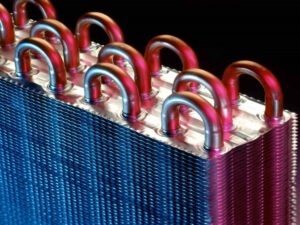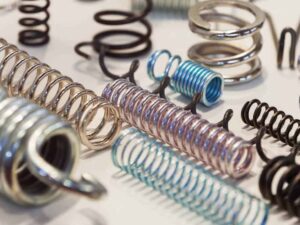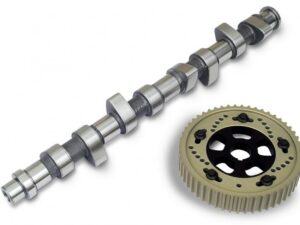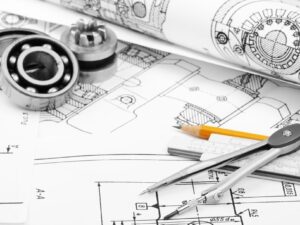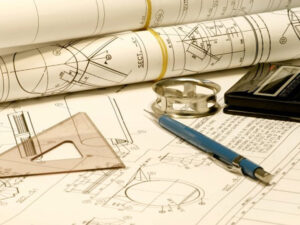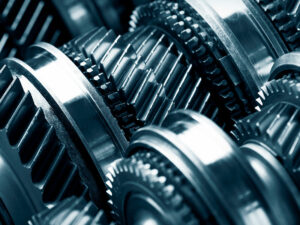REFRIGERATION AND AIR-CONDITIONING
Instructor
Harikishan Prajapati
- Description
- Curriculum
- Reviews
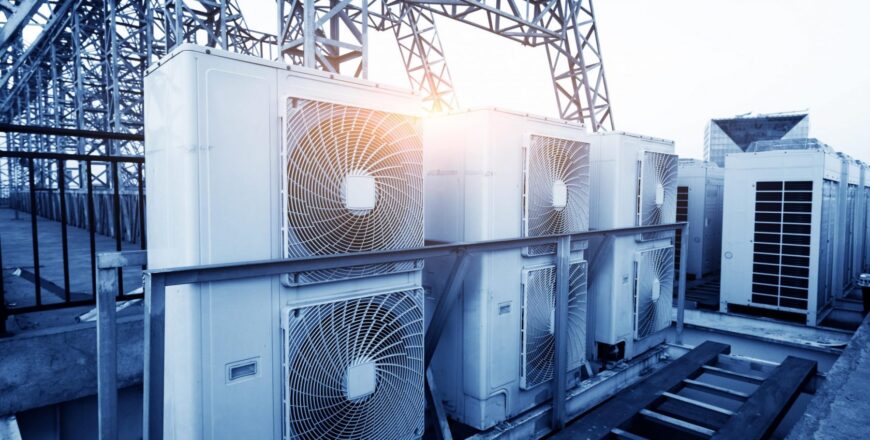
GUJARAT TECHNOLOGICAL UNIVERSITY
MECHANICAL ENGINEERING (19)
SUBJECT NAME:- REFRIGERATION AND AIR-CONDITIONING
SUBJECT CODE:- 2161908
B.E. 6th SEMESTER
- Introduction:- Brief history and need of refrigeration and air conditioning, methods of producing cooling, ton of refrigeration, coefficient of performance, types and application of refrigeration and air condensing system.
- Refrigerants:- classification, nomenclature, desirable properties, secondary refrigerants, future industrial refrigerants.
- Air refrigeration:- Reversed Carnot cycle and its limitation, Bell-Coleman cycle, aircraft refrigeration, working and analysis of simple; Bootstrap; Reduced ambient and Regenerative air refrigeration systems.
- Vapor Compression system- Simple system on P-h and T-s diagrams, analysis of the simple cycle, factors affecting the performance of the cycle, actual cycle Compound Compression System:- Compound Compression with intercooler, flash gas removal and flash intercooler, multiple evaporators with back pressure valves and with multiple expansion valves without flash intercooling, analysis of two evaporators with flash intercooler and individual expansion valve and multiple expansion valve, Cascade refrigeration system.
- Absorption refrigeration system:- Practical H20-NH3 Cycle, LiBr-H2O system and its working, h-x diagram and simple calculation of various process like adiabatic mixing and mixing with heat transfer, throttling, Electrolux refrigeration system.
- Refrigeration system components:- Types, Construction, working, comparison and selection of compressors, condensers, expansion devices and evaporator; refrigeration piping accessories, evacuation and charging of refrigerant, properties and classification of thermal insulation.
- Psychrometry:- Dalton’s law of partial pressure, Properties of moist air, temperature and humidity measuring instruments, psychometric chart, psychrometric processes such as sensible heating and cooling, heating and humidification cooling and dehumidification, chemical dehumidification, adiabatic saturation.
- Human comfort:- Selection of inside design conditions, thermal comfort, heat balance equation for a human being, factors affecting thermal comfort, effective temperature, comfort chart and factors governing effective temperature, selection of outside design conditions
- Load analysis:-site survey, outdoor and indoor design conditions. classification of loads, flywheel effect of building material and its use in design, effect of wall construction on cooling load, instantaneous heat gain (IHG) and instantaneous cooling load (ICL) heat transmission through sunlit and shaded glass using tables, method of reduction of solar heat gain through glass, calculation of cooling load TETD due sunlit and shaded roof and walls using tables, ventilation and air infiltration, load due to outside air , heat gain from occupants; electric lights; product; electric motor and appliances, load calculations for automobiles, use of load estimation sheet. Introduction of CLTD method
- Duct design and air distribution:- Function; classification and economic factor influencing duct layout, equal friction , velocity reduction and static regain methods of duct design, use of friction chart, dynamic losses and its determination, Requirements of air distribution system, air distribution, grills, outlets, application, location.
- Air-Conditioning systems:- Classification, system components, all air; all water ; and air-water systems, room air conditioners, packaged air conditioning plant, central air conditioning system, split air conditioning systems.
Review of Thermodynamics
-
1Introduction
-
2Thermodynamics System
-
3Dimensions and Units
-
4Energy
-
5Ideal Gas Equation
-
6Enthalpy
-
7Specific Heats if a Gas
-
8First Law of Thermodynamics
-
9Application of First Law of Thermodynamics to Closed System Processes
-
10Application of First Law of Thermodynamics to Steady Flow Open Systems
-
11Mechanical Work in Steady Flow Process
-
12Second Law of Thermodynamics
-
13Carnot's Theorem
-
14Entropy
-
15Principle of Increase of Entropy
-
16Entropy Change for Ideal Gas - General Equation
-
17State of a Substance
-
18Pure Substance
-
19Phase Transformation at Constant Pressure- Formation of Steam
-
20Properties of Steam
-
21Steam Table and Their Uses
-
22Temperature- Entropy (T-s) and Enthalpy- Entropy(h-s) Diagrams for Steam
-
23Compressed Liquid
-
24Heat Transfer
-
25Modes of Heat Transfer
-
26Heat Transfer by Conduction
-
27Fourier's Law of Heat Conduction
-
28Convection
-
29Overall Heat Transfer Coefficient U
-
30Heat Transfer in an Infinitely Long Cylinder
-
31Heat Transfer Through a Hollow Sphere
-
32Heat Transfer through A Composite Cylinder with Conduction and Convection
-
33Thermal Insulation
-
34Radiation
-
35Stefan-Boltzmann Law of Radiation
Basic and Development of Refrigeration
-
36Development of Refrigeration
-
37Definition of Refrigeration
-
38Systems of Refrigeration
-
39Non-cyclic Refrigeration
-
40Refrigeration by Expansion of Air
-
41Refrigeration by Throttling of Gas
-
42Vapour Compression Refrigeration System
-
43Liquid Gas Refrigeration
-
44Vortex Tube Refrigeration System
-
45Thermoelectric Refrigerator
-
46Production of Low Temperature by Magnetic Cooling
-
47Steam Jet Refrigeration System
-
48Concept of Heat Engine, Heat Pump, and Refrigerating Machines
-
49Unit of Refrigeration- Tons of Refrigeration(TR)
-
50Applications of Refrigeration and Air Conditioning
-
51Refrigerators
-
52Water coolers
-
53Deep Freezers
-
54Ice Making Plant
-
55Preservation of Food
-
56Types of Cold Storage
-
57Milk Chilling Plant for Dairy
Refrigerants
-
58Introduction
-
59Classification of Refrigerants
-
60Classification of Primary Refrigerants
-
61Design of Refrigerants
-
62Desirable Properties of a Good Refrigerant
-
63Properties of Important Refrigerants
-
64Selection of a Refrigerant
-
65Secondary Refrigerants
-
66Effect of CFCs on Ozone Depletion and Global Warming
-
67Montreal Protocol
-
68Search of Alternative Refrigerants of CFCs
-
69Promising Alternatives to CFCs Refrigerants
-
70Kyoto Protocol and TEWI
-
71Natural Refrigerants
Air Refrigeration Systems
-
72Air Refrigeration System
-
73The Carnot Refrigerator
-
74Bell-Coleman Air Refrigeration Cycle
-
75Application of Air Cycle Refrigeration for Aircrafts
-
76Methods of Air Refrigeration Systems
-
77Simple Air Cooling System
-
78Simple Air Evaporative Cooling System
-
79Bootstrap Air Refrigeration System
-
80Bootstrap Air Evaporative Cooling System
-
81Reduced Ambient Air Cooling System
-
82Regenerative Air Cooling System
-
83Compression of Various Aircraft Cooling Systems
Vapour Compression System
-
84Limitation of Air Refrigeration Cycle
-
85The Vapour Compression Refrigeration System
-
86Pressure- Enthalpy (p-h) Chart for Refrigerants
-
87Thermodynamic Analysis of Vapour Compression Refrigeration Cycle
-
88Wet Compression vs Dry Compression
-
89Effect of Operating Variable on Performance of Vapour Compression Refrigeration System
-
90Expansion Cylinder Vs Throttle Valve
-
91Thermodynamics Properties of Saturated Refrigerants
-
92Actual Vapour Compression Refrigeration Cycle
Compound Compression System
-
93Limitation and Drawbacks of Simple Vapour Compression Refrigeration Cycle
-
94Multistage Vapour Compression System
-
95Types of Multistage Vapour Compression System
-
96Two stage Compression with Liquid Intercooler
-
97Two Stage Compression with Water Intercooler and Liquid Sub-cooler
-
98Two Stage Compression with Water Intercooler Liquid Sub- cooler and Liquid Flash Chamber
-
99Two Stage Compression with Water Intercooler Liquid Sub-cooler and Flash Intercooler
-
100Multiple Evaporator and compressor Systems
-
101Multiple Evaporator at the Same Temperature and Single Compressor System
-
102Multiple Evaporators at Different Temperature with Single Compressor Individual Expansion Valves and Back Pressure Valve System
-
103Multiple Evaporators at Different Temperatures With Single Compressor Multiple Expansion Valves and Back Pressure Valves
-
104Multiple Evaporators with Individual Compressors and Individual Expansion Valves
-
105Multiple Evaporators with Individual Compressors and Multiple Expansion Valves
-
106Multiple Evaporator with Compound Compression and Individual Expansion Valves
-
107Multiple Evaporator System with Compound Compression Individual Expansion Valves and Flash Intercoolers
-
108Multiple Evaporator System with Compound Expansion, Multiple Expansion Valves and Flash Intercoolers
-
109Cascade System of Refrigeration
Vapour Absorption Refrigeration System
-
110Introduction
-
111Refrigerant- Solvent Properties
-
112Simple Ammonia- Water Vapour Absorption System
-
113Practical Ammonia- Water Vapour Absorption System
-
114Compression between Vapour Absorption and Vapour Compression System
-
115COP of An Ideal Vapour Absorption System
-
116Domestic Electrolux (NH3-H2) Refrigerator
-
117Lithium Bromide Absorption Refrigeration System
-
118New Mixtures for Vapour Absorption System
-
119Theory of Mixtures
-
120Temperature- Concentration (t-z) Diagram for Binary Mixtures
-
121Enthalpy Concentration Diagram( h-z)
-
122Adiabatic Mixing of Two Streams
Refrigeration System Components
-
123Introduction
-
124Compressor
-
125Reciprocating Compressor
-
126Rotary Compressor
-
127Centrifugal Compressor
-
128Screw Compressor
-
129Scroll Compressor
-
130Hermetically Sealed Compressor
-
131Condensers
-
132Expansion and Flow Control Devices
-
133Evaporator
-
134Accessories
-
135Controls
-
136Piping in Refrigeration System
-
137Insulation In Refrigeration
-
138Services Operations
Psychrometry
-
139Introduction
-
140Psychrometry and Psychrometric Properties
-
141Daltons Law of Partial Pressure
-
142Dry Bulb Temperature
-
143Specific Humidity or Humidity Ratio
-
144Relative Humidity
-
145Degree Of Saturation
-
146Thermodynamic Wet Bulb Temperature or Adiabatic Saturation of Air
-
147Enthalpy of Air
-
148Dew Point Temperature
-
149Vapour Density or Absolute Humidity
-
150Specific Volume
-
151Psychrometric Chart
-
152Psychrometric Processes
-
153Adiabatic Mixing of Air Streams
-
154Sensible Heating
-
155Sensible Cooling
-
156Humidification and Dehumidification of Air
-
157Cooling and Dehumidification
-
158Adiabatic Cooling or Evaporative Cooling or Cooling with Humidification Process
-
159Heating with Humidification
-
160Chemical Dehumidification or Sorbent Dehumidification
-
161Spray Processes
Human Comfort and Load Analysis
-
162Introduction
-
163Outside Design Conditions
-
164Inside Design Condition
-
165Human Comfort Chart
-
166Sources of Heat Load
-
167Heat Gain Through Glass
-
168Heat Load through Opaque Surface
-
169Infiltration
-
170Ventilation
-
171Outside Air Load
-
172Occupancy Heat Load
-
173Lighting
-
174Equipment
-
175Product Brought in
-
176System Heat Gain
-
177Equipment Selection
-
178RSHF ERSHF
-
179Psychrometric Analysis of Estimated Heat Load
-
180Psychrometric Analysis of Uncommon Load Patterns
-
181Partial Load Analysis
-
182Winter Air Conditioning
Duct Design and Air Distribution
-
183Introduction
-
184Supply Air Duct
-
185Fire Dampers
-
186Flow Through Duct
-
187Pressure Losses in the Duct
-
188Loss of Pressure Due to Friction
-
189Equivalent Diameter of a Circular Duct or Rectangular Duct
-
190Friction Chart for Circular Ducts
-
191Dynamic Losses in Duct
-
192Methods of Duct Design
-
193Pressure Drop in Ducts
-
194Room Air Distribution
-
195Types of Outlets
-
196Location of Outlet
-
197Return Air System
Air Conditioning System
Please, login to leave a review

